Embarking on an electric vehicle road trip is an exciting and eco-friendly way to explore new destinations while experiencing the convenience and efficiency of electric transportation. This article will guide enthusiasts and hobbyists through electric vehicle options, trip planning, emergency preparedness, understanding charging infrastructures, budgeting, vehicle preparation, and packing essentials for a seamless and enjoyable adventure.
Understanding electric vehicles
Introduction: Electric vehicles (EVs) have become increasingly popular in recent years due to their environmental benefits and technological advancements. Planning a road trip with an EV might seem challenging, but understanding the different types of electric vehicles, their range limits, charging times, and key features that support long-distance road trips can make your trip planning process seamless and enjoyable.
1. Understand the different types of electric vehicles
There are three main types of electric vehicles available on the market:
- Battery Electric Vehicles (BEVs): These vehicles run purely on battery power and produce zero tailpipe emissions. Examples include Tesla Model S, Chevrolet Bolt, and Nissan Leaf.
- Plug-in Hybrid Electric Vehicles (PHEVs): These vehicles have both a battery and a gasoline engine, allowing them to run on both electricity and gasoline. Examples include Chevrolet Volt, Ford Fusion Energi, and Toyota Prius Prime.
- Hybrid Electric Vehicles (HEVs): These vehicles use a gasoline engine to charge their electric motor, making them more fuel-efficient. Examples include Toyota Prius, Honda Insight, and Hyundai Ioniq.
For an electric vehicle road trip itinerary, it is best to choose a BEV or PHEV, as they allow for long-distance travel with minimal gasoline usage.
2. Know the range limits of your electric vehicle
One of the most critical factors in planning an EV road trip is understanding the distance your vehicle can travel on a single charge. This range can vary depending on factors such as driving conditions, road elevation, and usage of heating or air conditioning.
Typically, BEV models can reach around 150 to 300 miles without needing a recharge, while PHEVs have a shorter electric range (usually around 20 to 50 miles) but can rely on their gasoline engines when needed.
3. Learn about charging times and charging networks
Another essential aspect to consider when planning an EV road trip is the charging infrastructure available along your route. Depending on your vehicle’s charging capabilities, finding suitable charging stations along your route is crucial.
There are three main charging levels for electric vehicles:
- Level 1 (120V): Charging with a regular household outlet provides slow charging, usually delivering 2 to 5 miles of range per hour.
- Level 2 (240V): These charging stations are more common in public places and residential settings. They can deliver 10 to 60 miles of range per hour, depending on the vehicle and charging station’s power.
- DC Fast Charging (480V): These chargers are typically found along highways and provide 80% of battery capacity in around 30 minutes, making them ideal for long-distance road trips.
Several charging networks are available across the United States such as Tesla’s Supercharger network, ChargePoint, EVgo, and Electrify America. Study your route and plan your stops based on your vehicle’s range and charging station availability.
4. Consider key features that support long-distance road trips
When choosing an electric vehicle for a road trip, look for models with features such as:
- Adaptive Cruise Control (ACC): This feature helps maintain a set speed and distance from the vehicle in front of you, making highway driving less tiring.
- Navigation systems with EV-specific routing: These systems can plan your route based on charging infrastructure and optimize your trip for charging times and efficiency.
- Regenerative braking: This feature allows your vehicle to recover energy from braking, extending your range slightly.
- Comfortable seating and cargo space: Ensure the car is comfortable and spacious enough for long drives and can accommodate your luggage.
Conclusion: Understanding your electric vehicle’s capabilities, planning your route based on charging infrastructure, and considering features that support long-distance travel will make your EV road trip itinerary enjoyable and stress-free. So, buckle up, embrace the future of transportation, and have a fantastic adventure in your electric vehicle!
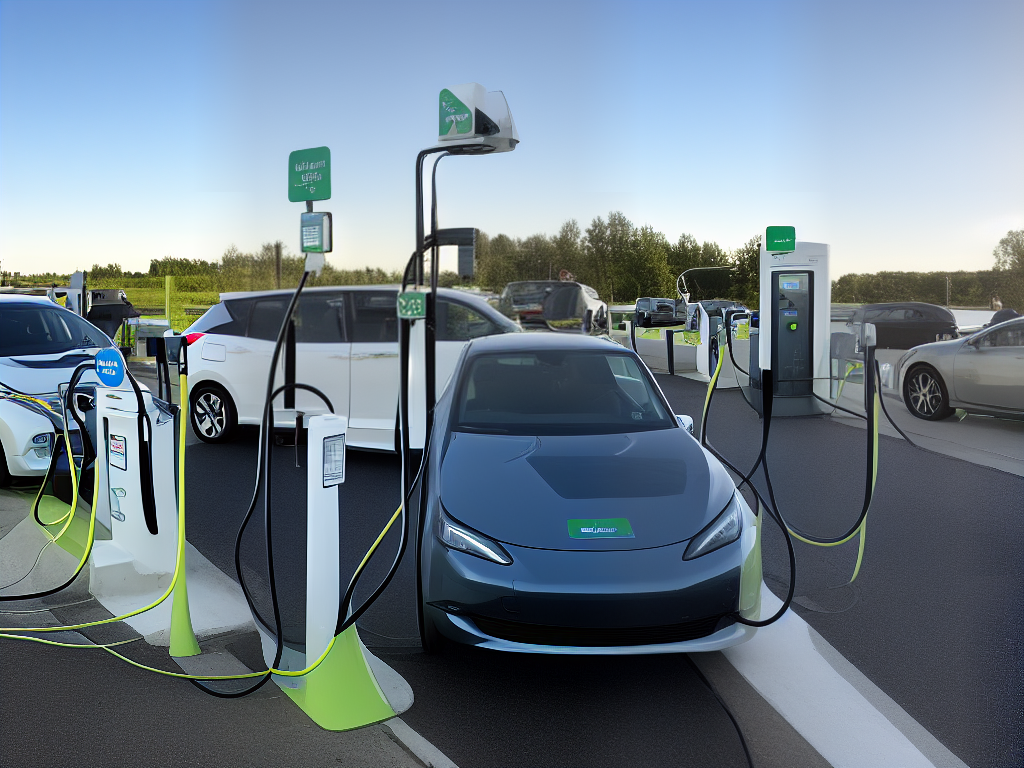
Planning your route
Taking a road trip with an electric vehicle (EV) adds excitement to your journey, due to the environmental benefits and the efficient technology of EVs. However, planning an electric vehicle road trip requires a bit more preparation than traditional road trips. This guide will help you in planning your route, researching popular electric vehicle road trip routes, available charging stations, and accommodations along the route.
Step 1: Choose the duration and distance of your trip
-
Determine the total driving distance and time for your trip. Consider the range of your EV and the frequency of charging stations along your route.
-
Choose a manageable trip duration to ensure you have enough time to recharge, explore, and relax. A week-long road trip is ideal as it provides ample opportunities to stop and recharge.
Step 2: Research popular electric vehicle road trip routes
-
Look for popular EV-specific road trip routes in your area or targeted destination. Many destinations have EV travel routes with pre-planned itineraries and suggested charging points.
-
Utilize online resources like PlugShare, ChargeHub, or EVmatch to find EV-friendly trips and see other users’ experiences.
-
Consult travel guides, blogs, or forums for inspiration on the best scenic drives and popular stops.
Step 3: Plan your charging stations
-
Identify the type of charging stations (Level 2 or DC fast charging) that are compatible with your EV and plan accordingly.
-
Use charging station locator tools such as PlugShare, ChargeHub, or ABRP (A Better Route Planner) to find charging stations along your route. Factoring in the location, availability, and charging time.
-
Plan to charge at hotels, restaurants, or other attractions to maximize your time during recharging breaks. Booking accommodations with charging stations is an added bonus.
-
Always have a backup plan. Locate alternative charging stations in case your preferred options are not available.
Step 4: Book accommodations
-
Choose accommodations that offer EV charging stations or ones that are located near public charging stations.
-
Consider different types of accommodations, such as hotels, motels, or vacation rentals, as they may offer different charging options for your EV.
-
Make reservations in advance to secure charging options at your accommodations and to avoid last-minute stress.
Step 5: Plan your activities
-
Build an itinerary that includes tourist attractions, outdoor activities, and scenic spots to fully experience your destination.
-
Take note of the locations and distances of nearby charging stations while planning your activities.
-
Schedule recharging breaks around meal times or activities, so you can enjoy the most of your time while your EV charges.
Step 6: Prepare for the unexpected
-
Ensure your EV is in excellent condition before starting the trip. Schedule a thorough maintenance check to prevent any mechanical issues during your journey.
-
Familiarize yourself with your EV’s features and settings, such as energy-efficient driving modes and regenerative braking systems, for optimal performance during your trip.
-
Keep necessary tools for emergencies in your EV, including a tire repair kit, first aid kit, and roadside assistance information.
With careful planning and research, an electric vehicle road trip can be a fun and environmentally friendly adventure. Utilize this guide to plan your upcoming itinerary and enjoy the journey as much as the destination.
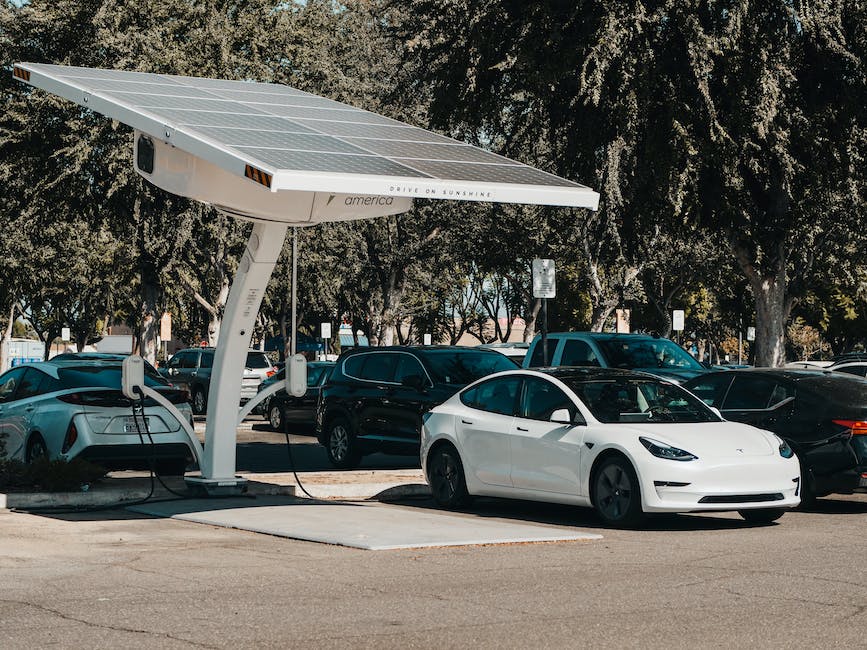
Emergency preparedness
Planning an electric vehicle (EV) road trip can be a fun and exciting adventure, but it also requires some careful planning and preparedness. In this guide, we will cover important aspects of your EV road trip itinerary and how to be prepared for emergencies that may occur during your journey.
Step 1: Plan Your Route and Charging Stops
- Research various EV charging networks and smartphone apps that will allow you to easily locate charging stations along your route.
- Plan your route, taking into account the range of your vehicle and the locations of charging stations.
- Make note of backup charging locations in the event that your primary charging station is unavailable.
- Study your vehicle’s owner’s manual to familiarize yourself with its charging capabilities and requirements.
Step 2: Create a Backup Plan
- Identify alternative routes or destinations in case you encounter problems with your planned itinerary.
- Have a list of nearby hotels, campgrounds, or rest areas where you can safely stop and rest.
- Plan activities or side trips that can help you pass the time while waiting for your vehicle to charge.
Step 3: Prepare for Emergencies
- Have a well-stocked emergency kit in your vehicle, including items such as a flashlight, first aid kit, spare tire, tire repair kit, jumper cables, and non-perishable food.
- Bring a portable power bank or extra cellphone battery to ensure that you are able to communicate in case of an emergency.
- Keep a printed list of important phone numbers, such as your insurance company, vehicle manufacturer, or local tow truck companies, in the event that you need assistance and your phone is not available.
- Familiarize yourself with basic vehicle maintenance tasks, such as changing a flat tire and checking fluid levels, as these skills can save you time and reduce stress in case of a breakdown.
Step 4: Monitor the Weather and Road Conditions
- Keep informed of the expected weather conditions throughout your road trip, as driving an EV in extreme temperatures can impact your vehicle’s range and overall performance.
- Plan for potential weather-related delays by adjusting your itinerary or having alternate routes prepared.
- Have necessary items on hand to handle various road conditions, such as tire chains for snowy conditions or window squeegees for heavy rain.
Step 5: Stay Charged and Drive Safely
- Practice safe and efficient driving habits, such as maintaining a consistent speed, using cruise control, and minimizing sudden accelerations, to help extend your vehicle’s range between charging stops.
- Monitor your vehicle’s charge level and plan your charging stops accordingly.
- Be prepared to be flexible with your plans, as charging station availability may vary, and your vehicle’s range may be impacted by factors such as weather, driving style, and terrain.
With careful planning and preparation, your electric vehicle road trip can be an enjoyable and memorable experience. By following these steps and being prepared for potential emergencies, you will be well on your way to a safe and worry-free adventure.
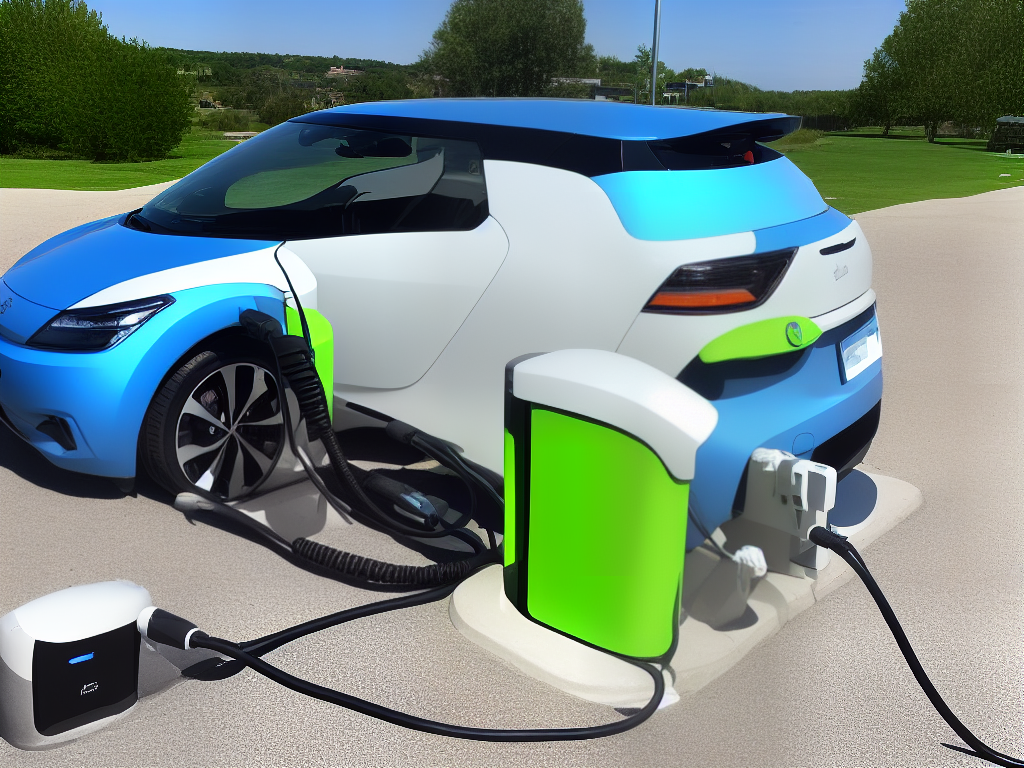
Understanding charging infrastructure
Planning an electric vehicle road trip itinerary can be both exciting and challenging. Understanding the charging infrastructure is important to make your journey smooth and enjoyable. In this guide, we will discuss various charging standards, availability of charging stations, different types of charging stations, and how to use them.
1. Charging Standards for Electric Vehicles:
There are three main charging standards for electric vehicles: Level 1, Level 2, and DC fast charging.
- Level 1:
- Uses a standard 110-120V household outlet
- Provides 2-5 miles of driving range per hour of charging
- Suitable for overnight charging or for emergency top-ups
- Level 2:
- Uses a 220-240V outlet, which is typically found in residential garages or commercial buildings
- Provides 10-60 miles of driving range per hour of charging
- Most widely available and commonly used for public charging stations
- DC Fast Charging:
- Provides 240-300 miles of driving range per hour of charging
- Typically found along highways or in areas with high demand for EV charging stations
- Compatible with CHAdeMO, CCS, and Tesla Supercharger networks (but adapters may be required)
2. Availability of Charging Stations:
There are several charging station networks available in the United States, including Tesla, ChargePoint, Electrify America, and EVgo. Here are some resources to help you find charging stations:
- Mobile apps: Download mobile apps like PlugShare, ChargePoint, and Electrify America for real-time information about station availability, user reviews, and more.
- Navigation systems: Many EVs have built-in navigation systems that can display nearby charging stations and plan your route based on your vehicle’s remaining battery range.
- Online maps: Use websites like EV Trip Planner, A Better Route Planner, or the U.S. Department of Energy’s Alternative Fueling Station Locator to plan your route and find charging stations.
3. Types of Charging Stations:
Charging stations are primarily categorized by their charging rate (Level 1, Level 2, or DC Fast Charging). They are also classified by connector types, including J1772, CHAdeMO, CCS, and Tesla.
- J1772:
- Universal connector for Level 1 and Level 2 charging
- Compatible with most electric vehicles in the United States, including: Chevrolet, Nissan, BMW, and more
- CHAdeMO:
- Found mainly on DC Fast Charging stations
- Compatible with vehicles like the Nissan Leaf and Mitsubishi Outlander PHEV
- CCS (Combined Charging System):
- Found mainly on DC Fast Charging stations
- Compatible with vehicles like the BMW i3, Chevrolet Bolt, and Volkswagen e-Golf
- Tesla:
- Found only at Tesla Supercharger stations
- Compatible exclusively with Tesla vehicles (Model S, Model X, Model 3, and Model Y)
4. How to Use Charging Stations:
- Locate a suitable charging station: Plan your trip beforehand, use mobile apps, or rely on your vehicle’s navigation system to find nearby charging locations.
- Check for compatibility: Be sure that the charging station is compatible with your vehicle’s charging standard and connector type.
- Bring necessary adapters: Some charging stations may require adapters for compatibility with your EV, so it’s a good idea to have them on hand.
- Payment and membership: Many charging networks require membership and payment via mobile apps or RFID cards. Sign up and set up payment beforehand to avoid complications during your trip.
- Plug in and charge: Park your EV within the designated charging spot and plug in. Make sure to follow any posted instructions or guidelines at the charging station to ensure a successful charging experience.
- Track your charging progress: Use your vehicle’s dashboard display or mobile apps to monitor charging progress and plan your next stop accordingly.
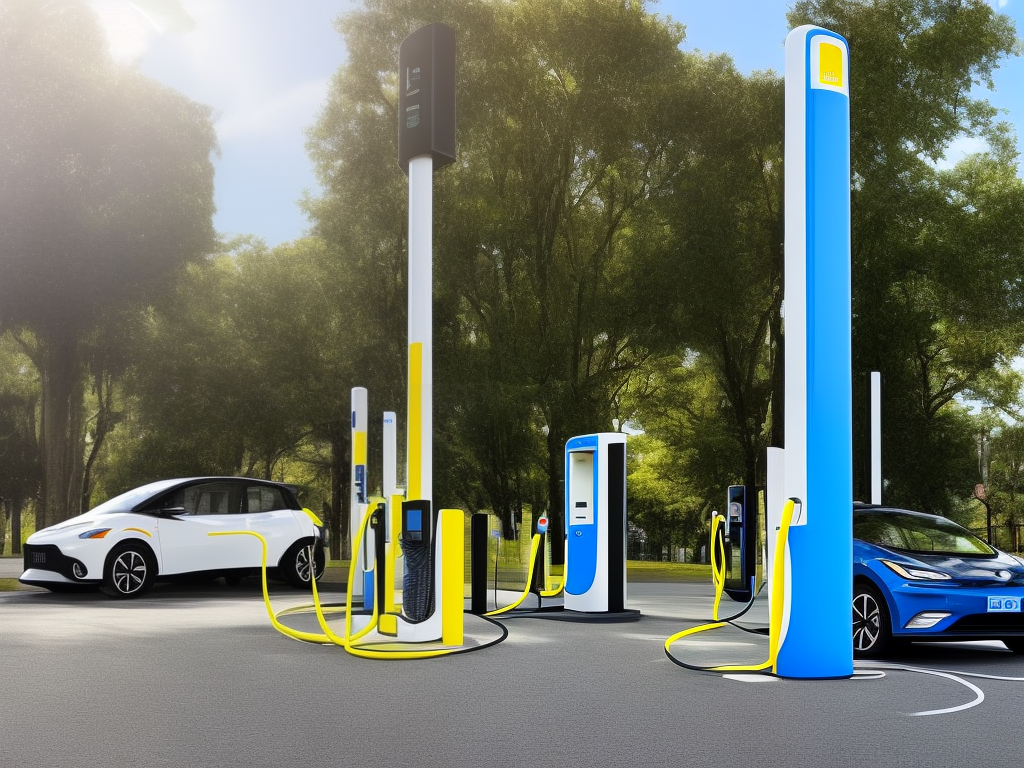
Budgeting and expenses
Planning an electric vehicle (EV) road trip can be exciting and environmentally friendly. With a little research and smart budgeting, you can create a memorable and affordable adventure. This guide will provide instructions on how to budget for and estimate expenses such as charging, accommodations, meals, tolls, and attractions along your route.
Step 1: Determine the distance and route
- Start by choosing your destination(s) and the total distance of your road trip.
- Use an online mapping tool or a GPS device to help calculate the best route.
- Make note of any major cities, attractions or points of interest you would like to visit along the way.
Step 2: Estimate charging costs
- Research the range of your electric vehicle and divide the total distance of your trip by that range to determine the number of charges you will need on your journey.
- Use a website or smartphone app specifically designed for EV road trips (such as PlugShare, A Better Route Planner, or ChargePoint) to locate charging stations along your route.
- Consider the cost per kilowatt-hour (kWh) at each charging station and your vehicle’s battery capacity to estimate charging costs. Remember that different charging stations have different costs, which can vary based on your charging network membership (such as Tesla’s Supercharger network).
Step 3: Calculate accommodation costs
- Determine the number of nights you will be on the road, and estimate how many of those nights will require paid accommodations (hotel, motel, Airbnb, etc.).
- Research lodging options along your route, taking into consideration budget constraints and any amenities you require (such as EV charging stations or free breakfast).
- Calculate the average cost per night for your accommodations and multiply this by the number of nights you will need lodging.
Step 4: Budget for meals
- Estimate the number of meals you will require while on the road, taking into account how many days your trip will last.
- Consider your dining preferences: eating out at restaurants, cooking your meals, or a combination of both.
- Budget a daily amount for meals (e.g., $10 for breakfast, $15 for lunch, and $25 for dinner) and multiply this by the number of days on your trip.
Step 5: Estimate toll costs
- Consult your route planning tool to identify any toll roads or bridges along your route.
- Estimate the cost of using these tolls, either by referencing the toll authority’s website or using a toll calculator app.
- Add the total estimated toll fees to your budget.
Step 6: Plan for attractions and activities
- Compile a list of attractions, museums, parks or other activities you want to visit during your road trip.
- Research the entrance fees or cost of these attractions and add them to your budget.
- Budget for any additional expenses, such as souvenirs, guided tours, or equipment rentals.
Step 7: Add miscellaneous expenses
- Consider any additional miscellaneous expenses such as parking fees, car maintenance (e.g., tire pressure checks, wiper fluid refills), and contingency funds for unexpected expenses or emergencies.
- Include these amounts in your budget.
Step 8: Calculate the total budget and adjust accordingly
- Add the estimated costs for charging, accommodations, meals, tolls, attractions, and miscellaneous expenses to determine your total road trip budget.
- Review your total budget and make any necessary adjustments to ensure you can afford your trip. You may need to revisit earlier steps to find ways to save money, such as choosing more budget-friendly accommodations or limiting the number of paid attractions during your journey.
With your electric vehicle road trip itinerary and budget planned, you are well on your way to an unforgettable and eco-friendly adventure. Remember to stay flexible and be prepared for any changes to your plans, such as unexpected detours or new points of interest you discover along the way. Happy travels!

Preparing your vehicle
A well-planned road trip with your electric vehicle can be an exciting and rewarding experience. To ensure a smooth and enjoyable journey, follow these steps to prepare your vehicle.
1. Check battery health:
Start by checking the health of your vehicle’s battery. Most electric vehicles (EVs) display the battery’s state of health (SOH) in the dashboard or through a mobile app. Make sure the battery is in good condition to support long hours of driving. If you have an older EV, it’s essential to determine how much battery capacity has degraded over time. If needed, replace the battery to ensure worry-free traveling.
2. Plan charging stops:
Use mobile apps or websites that offer information on charging station locations to map your route and identify charging stops. Ensure you choose charging locations compatible with your vehicle’s charging connector type and charging speed. Plan your breaks, meals, and sightseeing around these charging stops to make the best use of your time.
3. Update software and maps:
Make sure your EV’s software and maps are up-to-date. Manufacturers may release updates to improve energy efficiency, range, or charging speed. Updated maps ensure that you have accurate information on charging station locations and can help calculate estimated driving range based on your route.
4. Check tire pressure:
Proper tire pressure plays a significant role in improving your electric vehicle’s range. Check your owner’s manual for the recommended tire pressure, and make sure the tires are correctly inflated. You may want to consider inflating your tires to the highest recommended level for better energy efficiency.
5. Inspect brakes and suspension:
Plan a visit to your EV service center or a qualified mechanic for a thorough inspection. Make sure your brakes function properly and have sufficient brake pad material. Confirm that the suspension components, including shock absorbers, struts, and springs, are in good working condition.
6. Verify HVAC system:
Ensure that your climate control system is working correctly and efficiently, as it can have a considerable impact on energy consumption. If needed, change the cabin air filter or have the system serviced by a professional.
7. Prepare a toolbox and emergency kit:
Carry essential tools and equipment, such as a tire repair kit, air compressor, jumper cables, and a tow strap. Also, include a well-stocked emergency kit with items like a flashlight, first-aid supplies, non-perishable snacks, water, a reflective triangle, and a portable charger.
8. Practice efficient driving techniques:
Learning to drive efficiently in an electric vehicle can significantly improve your range. Research driving tips such as avoiding rapid acceleration and deceleration, using regenerative braking, and minimizing the use of climate control when possible.
9. Save energy:
Charge your smartphone, tablet, or other gadgets before starting your trip to minimize energy consumption during the drive. Limit the use of built-in USB charging ports, as they can impact the vehicle’s range.
Following these preparation steps will help ensure that your electric vehicle is in top shape for your upcoming road trip itinerary. With careful planning, you can fully enjoy the benefits of an electric vehicle while exploring new destinations. Happy travels!

Packing essentials
Are you planning an electric vehicle (EV) road trip? Make sure you bring along the essentials to ensure a smooth, worry-free journey. This guide will walk you through the necessary items to pack for your EV road trip, covering everything from charging cables to entertainment options. Let’s get started.
1. Charging cables and adapters:
- Be sure to pack your EV’s charging cable that came with your vehicle.
- Bring along any charging adapters that are compatible with your car (e.g., Tesla to SAE J1772 adapter). This will give you greater flexibility when using different charging stations during your trip.
- It might also be a good idea to bring an extension cord with a high amp rating for emergency situations or if you need to charge at a location with limited access to a power outlet.
2. Roadside emergency kit:
- Always have a roadside emergency kit in your car, including things like:
- Jumper cables
- First aid kit
- Reflective safety vest
- Flashlight
- Spare tire and tire-changing tools
- Small fire extinguisher
- Multipurpose utility tool
- Pre-charged portable power bank for charging electronic devices
- While EVs don’t have the same mechanical issues as gas-powered cars, it’s still important to be prepared in case of unexpected roadside issues or accidents.
3. EV charging network memberships and apps:
- Before your trip, research charging networks along your route and sign up for any necessary memberships to ensure you have access to charging stations.
- Download charging station locator apps on your smartphone and bookmark the websites of the networks you plan to use.
- Carry your charging membership cards with you and save access codes for charging station networks in your phone.
4. Navigation system and route planning:
- Use an EV-specific navigation system or app to plan your route, ensuring you’re aware of charging stations along the way, as well as detours and alternate routes if needed.
- Printed maps can also be helpful as a backup in case of loss of cellular service or GPS signal.
5. Snacks and hydration:
- Stock up on non-perishable snacks and drinks for the journey, especially if you’ll be traveling through remote areas with limited access to stores and amenities.
- Don’t forget to bring water to stay hydrated, as well as a reusable water bottle and thermos for hot beverages.
6. Entertainment and comfort items:
- Pack items to keep everyone entertained during your road trip, such as books, magazines, audiobooks, music, and podcasts.
- Bring along car and phone chargers, as well as necessary charging cables for your electronics.
- Don’t forget essentials like sunglasses, sunblock, a hat, and a neck pillow for comfort.
- If traveling with kids, bring along toys, games, and favorite comfort items to keep them happy and occupied during the trip.
7. Clothing and weather-related essentials:
- Check the weather forecast for your entire trip and pack appropriate clothing, such as rain gear, warm clothes, or lightweight layers.
- Bring along any weather-related necessities like an ice scraper, small blanket, or extra windshield wiper fluid.
Packing the right essentials can make all the difference in ensuring a successful and enjoyable electric vehicle road trip. By following this guide and being well-prepared, you can adventure down the open road with confidence, knowing that you’re ready for whatever the journey may bring.
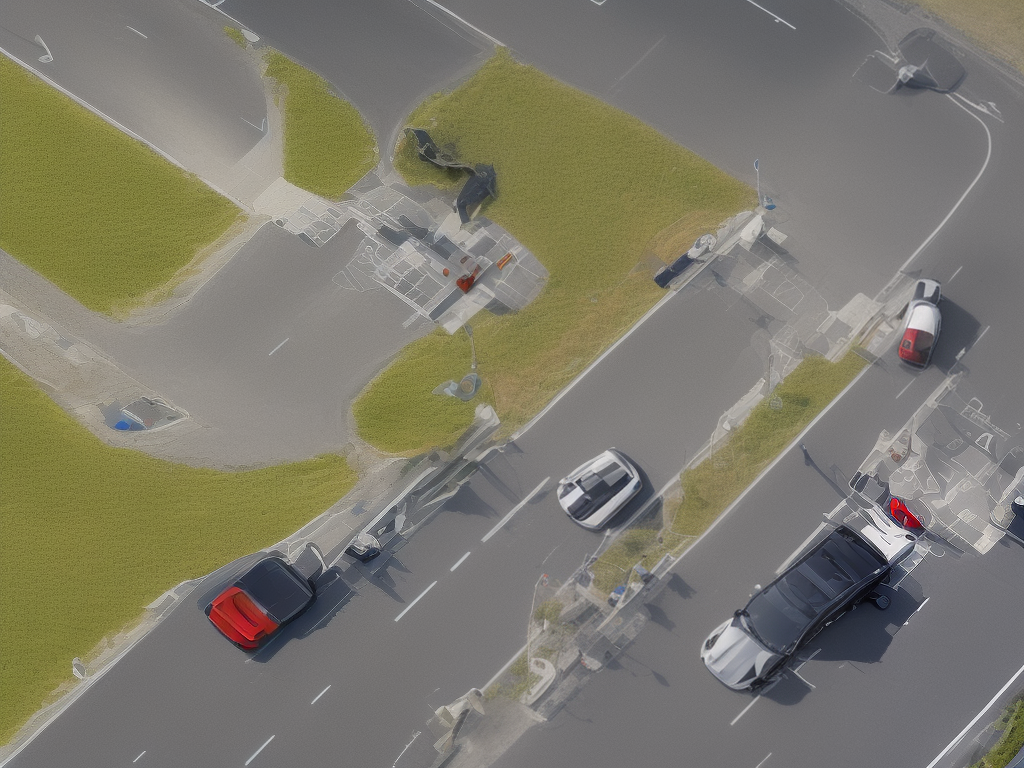
Now equipped with the knowledge of electric vehicles, route planning, emergency preparedness, charging infrastructure, budgeting, vehicle preparation, and packing essentials, you’re ready to embark on an unforgettable electric vehicle road trip. Embrace the journey as you explore new places and experiences, making memories on the open road while doing your part in creating a more sustainable future.